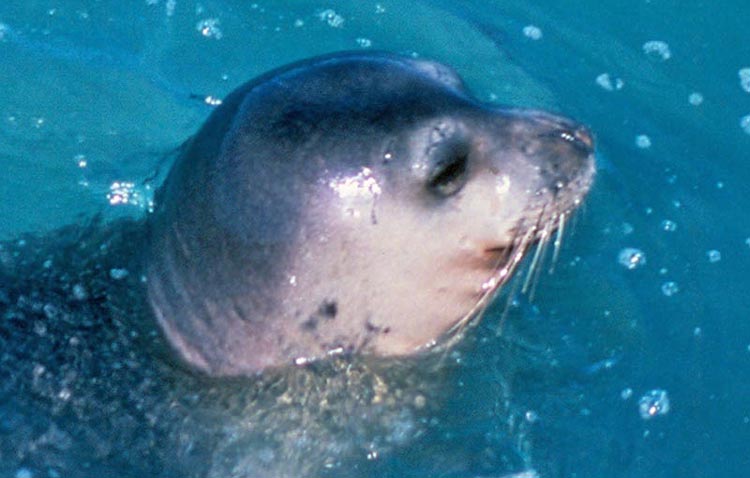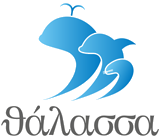MEDITERRANEAN MONK SEALS

© A. Bonetti / WWF Greece
The Life of the Mediterranean Monk Seal
Their eyes are always watery, though they do not weep. They are loving mothers, nursing, teaching and caring for their young up to 4 months. They live in austerity, as they seek isolation and the safety it provides, being persecuted by humans through the ages. They were, according to the ancient Greeks, sacred animals, protected by Poseidon and Apollo. Aristotle, Aristophanes and Homer as well as the later writers Papadiamantis, Elytis and Viziinos have granted them a place in their work.
The Mediterranean monk seal (Monachus monachus) is more than just another species of the marine environment; it is an integral part of the past, present and future of the Greek seas and the Mediterranean. In fact, it is in Greece where roughly half of the monk seal’s global population, 250 to 300 individuals, lives and breeds.
Even though they spend most of their life at sea, Mediterranean monk seals also make use of land, mostly remote sea caves, to rest, give birth and nurse their young. The species is observed throughout the coastal and island zone of Greece with the exception of the Amvrakikos and the Corinthian enclosed gulfs.
Life under Threat
Our companion ever since ancient times, this unique species is today one of the most threatened animals on the planet. According to The Red Data Book of Threatened Animals of Greece, the Mediterranean monk seal faces an extremely high risk of extinction from its natural environment in the immediate future and is classified as critically endangered. From Homer’s Odyssey and their ancient prime, how did monk seals end up struggling for their survival?
The main threats to monk seals are the depletion of food resources, accidental entrapment during fishing activities and intentional killing. Like all coastal species, given that they use the shores to rest and nurse their young, seals are also particularly threatened by the degradation of coastal ecosystems due to human activities. Another tangible threat to Mediterranean monk seals related to climate change is the possible sea level rise, which may cause the loss of thousands of sea caves.
Oil pollution, harassment by recreational vessels, noise pollution, climate change, disturbance, military drills, and the search for hydrocarbons are threats common to all marine mammals.
The Life We Protect
The protection and conservation of Mediterranean monk seals is a duty and responsibility for all of us. The value and uniqueness of the species as part of our natural heritage do not allow us to remain idle. Throughout the years, WWF Greece has developed a wide range of actions to ensure that they continue to swim in Greek waters and enjoy isolated shores.
Thalassa: Learn, Act, Protect
Since 2010, WWF Greece and MOm/ The Hellenic Society for the Study and Protection of the Monk Seal have been carrying out the European program Thalassa: Learn, Act, Protect in cooperation with the Pelagos Cetacean Research Institute and the Tethys Research Institute. It is the first awareness and participation campaign to be carried out in Greece concerning the 14 marine mammals, 9 resident and 5 occasional (dolphins, whales and the monk seal), that live in the Greek seas.
The campaign’s objective is to inform the public about these animals, the threats they face and their importance to the marine environment and to offer simple advice on ways to contribute to their conservation through a variety of communication tools. In addition, the campaign aims at raising awareness among pupils – tomorrow’s citizens – and engaging the parties that are professionally related to the marine environment. As part of the campaign, a series of educational activities was carried out in directly involved institutions, such as the Coast Guard, local government and merchant marine and naval academies, as well as in schools throughout Greece.
MOFI
Between 2005–2009, WWF Greece and MOm carried out the European program MOFI: Monk Seal and Fisheries: Mitigating the Conflict in Greek Seas, in cooperation with the Fisheries Research Institute of the National Agricultural Research Foundation, the Erasmus University of Rotterdam and the University of Aberdeen. The program’s objective was to improve conditions for the largest monk seal population in the world by reducing the negative effects of the interaction between monk seals and coastal fisheries on both parties. The program was focused on 7 key areas to assess the size and intensity of the interaction between monk seals and coastal fisheries (i.e., the impact of coastal fisheries on monk seals and the fishers’ losses with respect to catch and gear).
Τhe European project “Thalassa Campaign: Learn, Act, Protect/Awareness, Educational and Participation Campaign for Marine Mammals in Greece” was implemented by MOm/The Hellenic Society for the Study and Protection of the Mediterranean Monk Seal and WWF Greece together with Cetacean Research Institute Pelagos and Tethys Research Institute, with the contribution of LIFE financial instrument of the European Union, the Stavros Niarchos Foundation, Blue Planet Shipping SA and the Green Fund.
Share this





